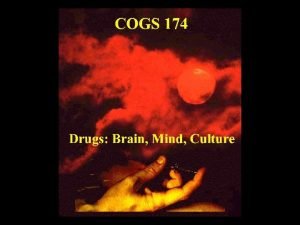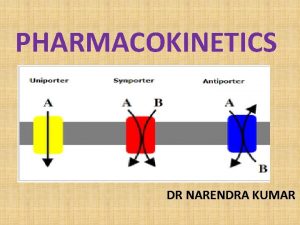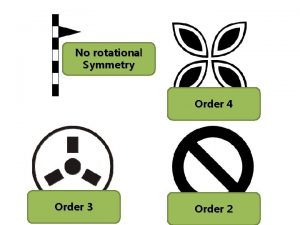Law and Order in the A Level Psychology










































- Slides: 42

Law and Order in the A Level Psychology Classroom: Great Ways to Teach Forensic Hosted by Joseph & Jim

Webinars Coming Soon Webinar Recordings/Resources www. tutor 2 u. net/psychology/series/cpdwebinar-recordings

Session Overview The Specification • Old Spec vs. New Spec • Possible Essay Questions…All 19 • Areas to Watch Out For Great Ways to Teach Forensic • Introduction Lessons • Offender Profiling • Eysenck’s EPQ and Signposting

Session Overview The Specification • Old Spec vs. New Spec • Possible Essay Questions…All 19 • Areas to Watch Out For Great Ways to Teach Forensic • Introduction Lessons • Offender Profiling • Eysenck’s EPQ and Signposting

The Specification • Old Spec vs. New Spec • Possible Essay Questions…All 19 • Areas to Watch Out For

VS.

Old Spec vs. New Spec Offending profile has become more specific, including topdown (organised vs. disorganised), bottom-up (including investigative psychology) and geographic profiling.

Old Spec vs. New Spec Biological explanations explicitly state genes and neural explanations. Psychological explanations now include: Cognitive explanations: level of moral reasoning and cognitive distortions Behaviourist explanations: differential association theory

Old Spec vs. New Spec Dealing with offenders now includes: Psychological effects of custodial sentencing Restorative justice programmes

Specification - Forensic 16. 1 Defining crime Problems in defining crime. Ways of measuring crime, including official statistics, victim surveys and offender surveys. 16. 2 Offender profiling: the top-down approach, including organised and disorganised types of offender; the bottom-up approach, including investigative Psychology; geographical profiling. 16. 3 Biological explanations of offending behaviour: an historical approach (atavistic offending behaviours form); genetics and neural explanations. Psychological explanations of offending behaviour: Eysenck’s theory of the 16. 4 Psychological explanations criminal personality; cognitive explanations; level of moral reasoning and cognitive distortions, including hostile attribution bias and minimalisation; of offending behaviour differential association theory; psychodynamic explanations. 16. 5 Dealing with offending behaviour: the aims of custodial sentencing and the psychological effects of custodial sentencing. Recidivism. Behaviour modification in custody. Anger management and restorative justice programmes.

Specification - Forensic 16. 1 Defining crime Problems in defining crime. Ways of measuring crime, including official statistics, victim surveys and offender surveys. 16. 2 Offender profiling: the top-down approach, including organised and disorganised types of offender; the bottom-up approach, including investigative Psychology; geographical profiling. 16. 3 Biological explanations of offending behaviour: an historical approach (atavistic offending behaviours form); genetics and neural explanations. Psychological explanations of offending behaviour: Eysenck’s theory of the 16. 4 Psychological explanations criminal personality; cognitive explanations; level of moral reasoning and cognitive distortions, including hostile attribution bias and minimalisation; of offending behaviour differential association theory; psychodynamic explanations. 16. 5 Dealing with offending behaviour: the aims of custodial sentencing and the psychological effects of custodial sentencing. Recidivism. Behaviour modification in custody. Anger management and restorative justice programmes.

Essay Questions

Essay Questions At least 19 essay questions appear in the SAMs and different textbooks. Psychological explanations and dealing with offender behaviour are huge topics with a minimum of 5 and 7 essay questions respectively.

Areas to Watch Out For Examiner Commentary: Discuss Eysenck’s theory of the criminal personality. Refer to evidence in your answer. (Total 16 marks) AO 1: Many students knew little at all about Eysenck’s theory as it relates to offending. AO 1: A substantial number of students could not even identify the criminal personality as someone with a high E and high N score. AO 3: Discussions were generally very weak and mostly focused on problems with the EPI without any link to criminal personality. AO 3: Knowledge of the inherited aspect of the personality and links to the nervous system were rare.

Areas to Watch Out For Examiner Commentary: Describe and evaluate anger management as a treatment for offending. Refer to evidence in your answer. (Total 16 marks) AO 3: Evaluations were generally weaker, with listed evaluation points. AO 3: Evidence was often missing or so vague as to be unworthy of credit.

Areas to Watch Out For Examiner Commentary: Outline and compare two explanations for offending. Refer to evidence in your answer. (Total 16 marks) AO 3: little effective comparison was made…usually each explanation was evaluated separately in turn. AO 3: As a consequence, many students who ought to have done better were limited to a maximum of six marks.

Eysenck’s Theory Of The Criminal Personality Anger Management Comparison Questions

The Specification Any Questions? The Specification • Old Spec vs. New Spec • Possible Essay Questions…All 19 • Areas to Watch Out For

Great Ways to Teach Forensic • Introduction Lessons • Offender Profiling • Eysenck’s EPQ and Signposting

Useful & Fun Websites www. maps. met. police. uk http: //pimptheface. com/

Useful & Fun Websites http: //pimptheface. com/ Homework: Create a male/female face which looks like a ‘criminal’… Discussion for atavistic form: sloping brow (which according to Lombroso, indicated low intelligence levels) pronounced jaw high cheekbones large ears

The Changing Nature of Crime Activity 1: The Changing Nature of Crime. The aim of this activity is for students to consider the problems with defining crime and the changing nature of crime.

The Changing Nature of Crime Points to consider: Culture Time Age

Offender Profiling: Top-Down Flow Chart Activity 2: Top-Down Flow Chart The aim of this activity is for students to create a diagram for the Top. Down Approach. Two teaching methods: Sorting task Labelling task

Offender Profiling: Top-Down Flow Chart Teaching Method 1: Sorting Task Print the labels onto A 3 paper your students 5 -10 minutes to arrange the labels into a logical flow chart. Data Assimilation rimde Reconstruc C Crimerganise Organised Diso Classif icatio n Profile Generation to a in e im r c A e u n h p t la g n n ed crimre where Organisin the do v is ic n ti a m g is r o n. ot taerg e i. ( e e te p y d t. T r h la e body is particu ledft) visible at th e is e n se a en. Recdoisorg nstru deve ctiall Collection ng tevidence lop p of r edict he crimne. This and b (e. g. o in or available crime iobnassed scene ehav a e b i l i o f o o u r r of uritotuhs der to p a a g v n i t el o p hng results) photos, tiv Develo post mortem regardi e offe sicam es phnyd ation inform tics, including liteyr. /victim A planned where. the victim a ncrime eris d perso charact anceisantargeted and the body is hidden appear or removed.

Data Assimilation Collection of all evidence available (e. g. crime scene photos, post mortem results) Crime Classification Organising the crime into a particular type (i. e. organised or disorganised) Organised A planned crime where the victim is targeted and the body is hidden or removed. Crime Reconstruction Reconstructing the crime in order to develop predictions about the motives and behaviour of the offender/victim. Profile Generation Developing a profile based on This information regarding various characteristics, including physical appearance and personality. Disorganised A unplanned crime where the victim is not targeted. The body is left visible at the seen.

Offender Profiling: Top-Down Flow Chart Teaching Method 2: Labelling Task Provide the students with a blank flow chart and the key terms and ask them to complete their flow charts using the information provided.

Offender Profiling: Bottom-Up Activity 3: Bottom-Up (Flipped Learning). Profiling As Forensic Psychology is a large unit with lots of interesting documentaries, there is an opportunity to use a flipped learning approach.

Offender Profiling: Bottom-Up The handout provides links to two documentaries. https: //www. youtube. com/watch? v=Z u 21 Oy. Kl 6 k 4 https: //www. youtube. com/watch? v= Djd. HQKdk. NJ 4

Offender Profiling: Bottom-Up

Offender Profiling: Bottom-Up

The EPQ & Signposting Activity 4 a: The EPQ The aim of this activity is for students to complete the EPQ and consider the validity and reliability of assessing personality using a questionnaire.

The EPQ & Signposting Activity 4 a: The EPQ The students add up their scores for E, I, N and S and consider: 1. Do you think that it is possible to measure personality using a questionnaire? 2. Do you think that your personality remains consistent over time? 3. Are there any issues with measuring personality using a questionnaire? 4. How could you assess the reliability of this questionnaire?

The EPQ & Signposting Activity 4 b: Signposting The aim of this activity is to ensure help student tailor their evaluation points to the following question: Discuss Eysenck’s theory of the criminal personality. Refer to evidence in your answer. (Total 16 marks)

Point: There is an unclear relationship between all three personality traits and offending behaviour; It may be that the type of crime is a more reliable predictor of whether or not a person is an extrovert or not. Evidence / Example Evidence: For example, if extroverts seek out environmental stimulation, criminals who happen to be extroverted may commit crimes that raise adrenaline levels such as joy riding or physical assault. Explain The EPQ & Signposting This is important because it may be that extroversion does not relate to criminality at all, but is a distinguishing factor in the types of crime committed.

Point: There is an unclear relationship between all three personality traits and offending behaviour; for example, extroversion is not consistently found to relate to criminality. It may be that the type of crime is a more reliable predictor of whether or not a person is an extrovert or not. Evidence / Example Evidence: For example, if extroverts seek out environmental stimulation, criminals who happen to be extroverted may commit crimes that raise adrenaline levels such as joy riding or physical assault. Explain The EPQ & Signposting This is important because it may be that extroversion does not relate to criminality at all, but is a distinguishing factor in the types of crime committed and therefore Eysenck’s theory of criminal personality may be an invalid predictor of criminality.

The EPQ & Signposting Activity 4 b: Signposting The aim of this activity is to ensure help student tailor their evaluation points to the following question: Discuss Eysenck’s theory of the criminal personality. Refer to evidence in your answer. (Total 16 marks)

Great Ways to Teach Forensic Any Questions? Great Ways to Teach Forensic • Introduction Lessons • Offender Profiling • Eysenck’s EPQ and Signposting

Today’s Resources Posted in our Facebook Groups. Uploaded to our ‘CPD Webinar Recordings’. www. tutor 2 u. net/psychol ogy/series/cpd-webinarrecordings

Strong Foundations – Student Workshop 22 nd November Portsmouth 23 rd November London (Fulham) 24 th November London (Stratford) 25 th November Cambridge 28 th November Bristol 29 th November Birmingham 30 th November Manchester 1 st December Leeds 2 nd December Gateshead

Strong Foundations – Student Workshop To book: Visit www. tutor 2 u. net/events Email events@tutor 2 u. net

Don’t forget to sign up for our future webinars: www. tutor 2 u. net/psychology/events Please follow us on Twitter @tutor 2 upsych and spread the word… Join our Teacher FB Community, search: ‘AQA A Level Psychology Teachers’ Encourage your students to join our Student FB Community: ‘A Level Psychology Student Group’. If you ever need any advice, support or guidance, email: joseph@tutor 2 u. net Any Questions?
 Law is order and good law is good order
Law is order and good law is good order Newton's first law and second law and third law
Newton's first law and second law and third law Newton's first law and second law and third law
Newton's first law and second law and third law Via optica
Via optica Boyle's law charles law avogadro's law
Boyle's law charles law avogadro's law Avogadro's law constant
Avogadro's law constant Natural and inverted sentences
Natural and inverted sentences Difference between zero and first order kinetics
Difference between zero and first order kinetics First order drug elimination
First order drug elimination First-order change
First-order change First order cybernetics and second order cybernetics
First order cybernetics and second order cybernetics Hát kết hợp bộ gõ cơ thể
Hát kết hợp bộ gõ cơ thể Slidetodoc
Slidetodoc Bổ thể
Bổ thể Tỉ lệ cơ thể trẻ em
Tỉ lệ cơ thể trẻ em Chó sói
Chó sói Glasgow thang điểm
Glasgow thang điểm Chúa yêu trần thế alleluia
Chúa yêu trần thế alleluia Các môn thể thao bắt đầu bằng tiếng bóng
Các môn thể thao bắt đầu bằng tiếng bóng Thế nào là hệ số cao nhất
Thế nào là hệ số cao nhất Các châu lục và đại dương trên thế giới
Các châu lục và đại dương trên thế giới Công thức tính thế năng
Công thức tính thế năng Trời xanh đây là của chúng ta thể thơ
Trời xanh đây là của chúng ta thể thơ Mật thư tọa độ 5x5
Mật thư tọa độ 5x5 Phép trừ bù
Phép trừ bù Phản ứng thế ankan
Phản ứng thế ankan Các châu lục và đại dương trên thế giới
Các châu lục và đại dương trên thế giới Thơ thất ngôn tứ tuyệt đường luật
Thơ thất ngôn tứ tuyệt đường luật Quá trình desamine hóa có thể tạo ra
Quá trình desamine hóa có thể tạo ra Một số thể thơ truyền thống
Một số thể thơ truyền thống Bàn tay mà dây bẩn
Bàn tay mà dây bẩn Vẽ hình chiếu vuông góc của vật thể sau
Vẽ hình chiếu vuông góc của vật thể sau Thế nào là sự mỏi cơ
Thế nào là sự mỏi cơ đặc điểm cơ thể của người tối cổ
đặc điểm cơ thể của người tối cổ Thứ tự các dấu thăng giáng ở hóa biểu
Thứ tự các dấu thăng giáng ở hóa biểu Vẽ hình chiếu đứng bằng cạnh của vật thể
Vẽ hình chiếu đứng bằng cạnh của vật thể Phối cảnh
Phối cảnh Thẻ vin
Thẻ vin đại từ thay thế
đại từ thay thế điện thế nghỉ
điện thế nghỉ Tư thế ngồi viết
Tư thế ngồi viết Diễn thế sinh thái là
Diễn thế sinh thái là Các loại đột biến cấu trúc nhiễm sắc thể
Các loại đột biến cấu trúc nhiễm sắc thể


































































